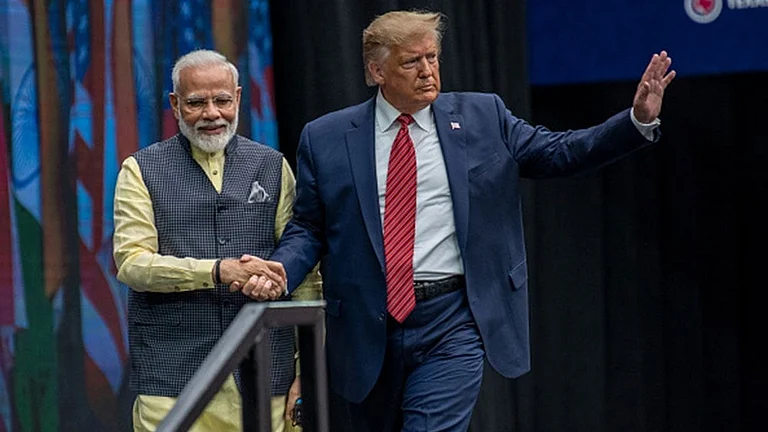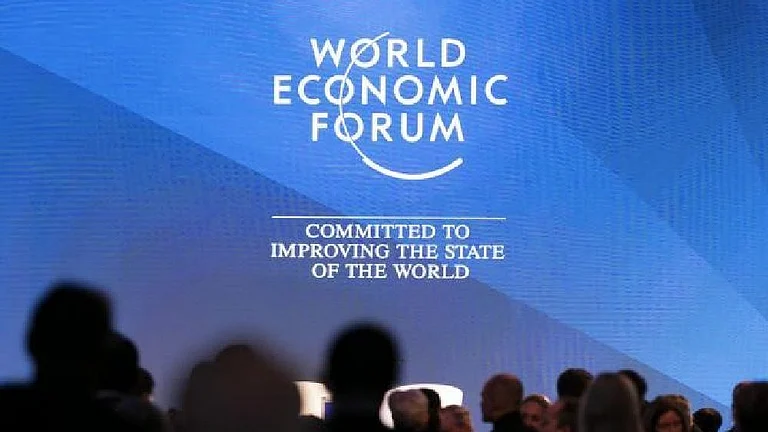Even after 75 years of India's independence, the issue of reservations in public education and employment is as hotly debated as it was during the Constituent Assembly sessions.
Today, much of the discourse moves around the 'Creamy Layer Exclusion' principle that seeks to segregate the "forward sections" of a particular backward class and thereby curtail their access to the government's affirmative action. Simply put then, the creamy layer refers to "some members of a backward class who are socially, economically as well as educationally advanced as compared to the rest of the members of that community."
The push to identify the 'Creamy' and 'Dry' layers
On September 26 2018, a five-judge Constitution bench delivered a controversial verdict in Jarnail Singh vs Lachhmi Narain Gupta case calling for an extension of the creamy layer principle for reservation in promotions for Scheduled Castes and Scheduled Tribes.
The bench noted that adhering to the letter and spirit of principles of equality and social justice, it is crucial to exclude the "advanced" sections of the community from benefits of reservations. The ruling read, "Equality will not be possible if only the creamy layer within that class bag all the coveted jobs in the public sector and perpetuate themselves, leaving the rest of the class as backward as they always were."
But 2018 is not the first time the banner of creamy layer exclusion amidst Dalit reservations has sprung up. In fact, nearly a decade before the verdict, a vidvat sabha (council of intellectuals), led by activist Prakash Ambedkar, was convened in Mumbai in August 2009 to extensively look into the appropriation of the benefits of reservations by a select few among the SCs. . Thousands of concerned citizens participated in the event that highlighted how a disproportionate access for a select few has manufactured inequalities within the SC community.
In an EPW article, activist Anand Teltumbde has seconded these emerging patterns of inequality when he highlights that it is indeed true that certain sections of Dalits have been able to reap the benefits of positive discriminations meted out that enabled them to achieve significant upward mobility. The Malas in Andhra Pradesh, the Jatavs in Uttar Pradesh, the Palars in Tamil Nadu, the Holeyas in Karnataka are some examples.
Teltumbde, however, in the same breath, argues that the progressed lot of Dalits have imbibed a sense of caste superiority. He writes, ever so tellingly, that the "This is the prowess of the caste system that even the victim forgets his own victimhood and instead assumes the oppressor's posture." Inequitable access to reservations has then created inequalities among beneficiary castes, weakened intra-community cohesion, and fueled proponents of caste blindness.
Roots of the Creamy Layer debate: Social Justice and Equality
Essentially then, the demand for applying the creamy layer principle to Dalit reservations rests seemingly on two pillars. The first argument is led by the social justice theory, wherein it is believed that the "poorest of the poor" have been denied the said benefits and the more affluent sections have successfully cornered them in a somewhat zero-sum game.
The second argument is veiled under the equality paradigm, that suggests that treating the economically advanced Dalits at par with those from humble backgrounds is unfair. This approach equates economic upliftment to social upliftment and argues that those Dalits who have gained sufficient money power should instead be treated at par with the general "forward" sections of society.
So before one even examines the merits of the creamy layer exclusion from Dalit reservations, it is pertinent to ascertain the weight of the two-fold arguments that have called for such distinctions in the first place.
Have the benefits of reservations really been cornered?
In their EPW article titled Prejudice Against Reservation Policies , Sukhadeo Thorat, Nitin Tagade, and Ajaya K Naik thoroughly analyzed data from the National Sample Survey employment figures for 2011-12 to study the extent of correlation between education levels and employment in central government jobs among Dalits. In a not so startling revelation, they found that recruitments in Grades C and D jobs together accounted for about 81% of the total of 8.94 lakh SC employees, while the remaining 19% were absorbed in Grades A and B, which is a clear indication that a significant use of reservation has been made by the weaker sections.
This corollary is further corroborated by the fact that out of a total of about 26 lakh permanent SC employees, around 68% were educated below the secondary and higher secondary levels or were diploma holders. Moreover, 96% of the SC employees owned less than five acres of land. All of these facts are sufficient to throw light on the socio-economic background of those who have availed reservations and bust myths that question the reservation policy's pro-poor orientation.
Caste Discrimination does not discriminate based on Financial Status
The latter argument that advocates an economic criterion in extending reservations for Dalits falls short on at least two counts. First, affirmative action for SCs and STs is based on the recognition of "identity" of being an untouchable or adivasi, as opposed to "backwardness," which was the sole criterion for OBCs (Other Backward Classes) reservations. Inclusion of castes and tribes under the Presidential lists as per the Constitutional provisions is in itself a testament to their undisputed backwardness. While poverty certainly emanates from social backwardness, the reverse is not necessarily true and the stigma of identity is, in Rohith Vemula's words, a "fatal accident of birth" that perpetuates unabated even in the face of one dimensional advancement.
Second, and here we borrow from Thorat, Tagade, and Naik, who have eloquently argued that "caste discrimination is neutral to economic status." A high ranking Dalit minister is as susceptible to be subjected to the evils of a regressive mindset and the practice of untouchability as a landless laborer. This supposed 'equality' amongst the poor and well-off Dalits in the face of upper caste domination was exemplified when former Deputy Prime Minister Jagjivan Ram unveiled the statue of Dr Sampoornanand and after he left, the statue was 'purified' with gangaajal . The shameful gaze of 'purity and pollution' spares none and caste based discrimination remains a ground reality.
Fallacy of treating Reservations as a Poverty Alleviation program
In this regard, the trio writes that the economic criterion debate has failed to draw a distinction between exclusion of the better-off SCs from concessional economic benefits and their exclusion from protection against caste-based discrimination in employment through reservation. This line of thought commits the fallacy of treating reservation policy as a poverty alleviation scheme and disregards the reality that even the economically better-off SCs need protection against discrimination to ensure fair access to and share in employment, assets, housing and education.
Financial upliftment thus is merely one weapon to fight the war against deeply entrenched caste consciousness and bias. It is in this respect that Dalit activists have opposed the extension of the creamy layer principle of introducing reservations within reservations for the community. Professor Sreepati Ramudu in his paper titled Creamy Layer Implications for SCs and STs drives home the viewpoint of how such an extension would be at the detriment of the community as a whole.
How Creamy Layer exclusions might weaken the Dalit revolution
Ramudu writes that over the last few decades, the reservation policy has not only enabled many in the SC community to find decent jobs and education opportunities but has actually contributed to the rise of a coveted middle class among the Dalits. This middle class has moved away from traditional caste stricken occupations, has a strong voice of resistance against oppression and leads a life of dignity. Those who are able to demonstrate this upward mobility become immediate role models for others in the community.
In this regard, the creation of sub divisions among Dalits based on financial status can ultimately lead to compartmentalisation, turning the well off Dalits into mute spectators in the revolution as opposed to possible role models, allies, and co-beneficiaries. Such a segregation will inadvertently lead to the "othering" of the advanced Dalit class which will have the effect of an overall weakening of caste cohesion and in turn fabricate a caste blindness.
This tendency of the savarna castes to vilify reservations has performed the role of a counter-revolution to the Dalit revolution wherein the educated Dalits in well paid government jobs are portrayed as the norm instead of the exception and misappropriated as the poster child for the anti- reservation movement.
Reservations within Reservations: Is it really a solution?
The Prakash Ambedkar-led Mumbai sabha had as early as 2009 vociferously flouted the idea of having reservations within reservations for the most downtrodden sections of the Dalit community. This "two-tier" system of reservations proposed to dynamically divide the entire Dalit population into two categories of families: those that have availed of reservation and those that have not benefited from it so far. It then proposes that reservation should be prioritized to the families that have not availed of it so far. The category that has already had access to reservations will now get it only after those who have not availed of it are given access to it, and obviously, only if some of it remains.
Teltumbde satirically describes this two-tier reservation scheme as "an amazingly simple solution to such a vexatious problem!" While it may be prudent to say that a class divide has become visible within the echelons of caste, the need of the hour is to frame policies that align closely with the bigger picture. In this regard, while the economically better-off SCs still need reservations to navigate through caste bias in formal setups, and not so much financial support, the economically weaker SCs need both the provision of reservations as well as financial aid to ensure equitable access to education and employment.
Segregating and bidding one section of Dalits against the other by applying the creamy layer principle in a 'one size fits all' approach at this juncture would be akin to giving a saw to the carpenter to cut a piece of wood and he uses it to cut the entire forest itself!


























